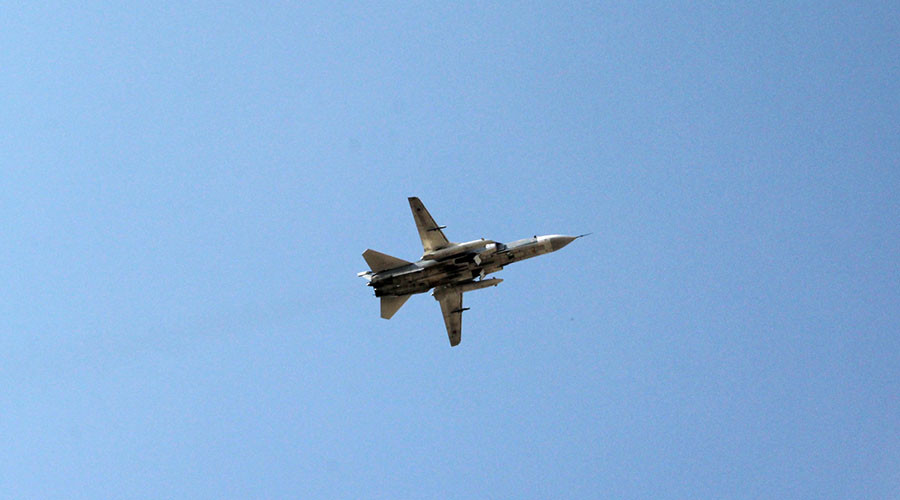
A Russian Su-24 strike aircraft in the sky over the Khmeimim airbase in Syria. Photo: Dmitriy Vinogradov / RIA Novosti
On April 9, warplanes of the Russian Aerospace Forces (VKS) carried out at least eight airstrikes on the northwestern Syrian region of Greater Idlib.
The airstrikes targeted the outskirts of the towns of Fleifel and al-Fatterah in the southern Idlib countryside. Al-Qaeda-affiliated Hay’at Tahrir al-Sham (HTS), the de-facto ruler of Greater Idlib, and its allies maintain a network of positions near the two towns, which are located right on the frontline with the Syrian Arab Army (SAA).
Following the Russian airstrikes, the SAA artillery pounded the outskirts of the towns of al-Bara and Kansafra, which are also located in the southern countryside of Idlib.
شن طيران الإحتلال الروسي عدة غارات جوية على محيط بلدة #الفطيرة و #فليفل بريف #إدلب الجنوبي مع تحليق لطيران الاستطلاع الليزرية اورلان 30… pic.twitter.com/FzN65jRRWa
— المرصد أبو أمين 80 (@Najdat567) April 9, 2022
The Russian and Syrian strikes were either a response to recent violations of the ceasefire in Greater Idlib, or a warning to HTS.
Recent reports revealed attempts by HTS and other terrorist groups, including al-Qaeda’s Horas al-Din, to send dozens of highly-experienced terrorists from Greater Idlib to Ukraine, where the Russian military is currently conducting a special operation.
Despite the ongoing operation in Ukraine, the VKS remain active in Syria. Russian warplanes continue to target HTS and other terrorist groups in Greater Idlib, as well as ISIS cells in the central region on a regular basis.
The ceasefire in Greater Idlib, which was brokered by Russia and Turkey more than two years ago, is still holding up. Despite all recent developments, a full-on confrontation in the region remains unlikely to happen any time soon.





